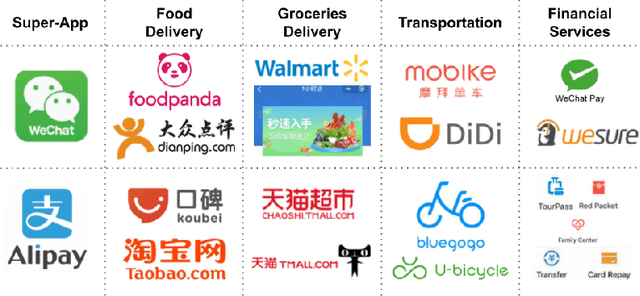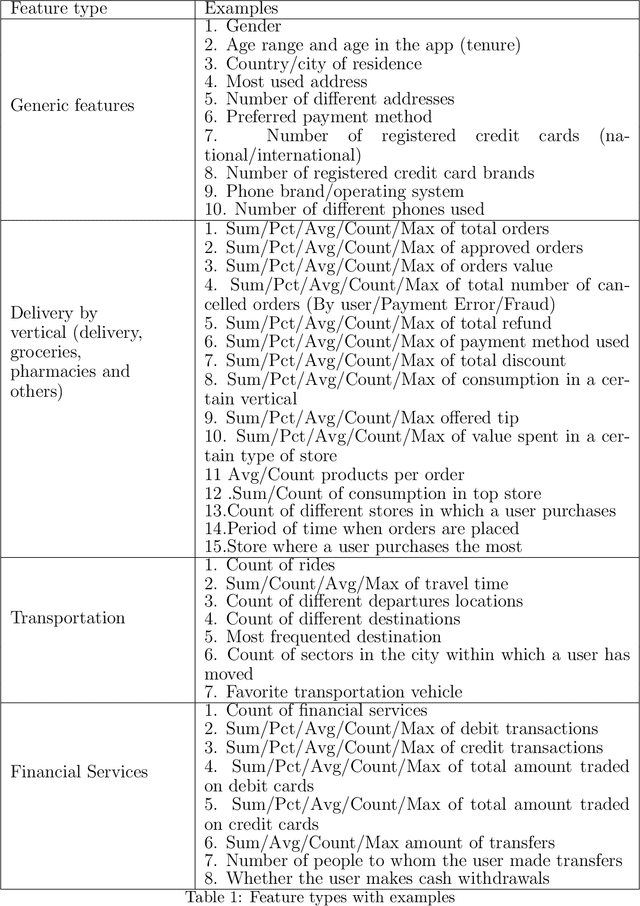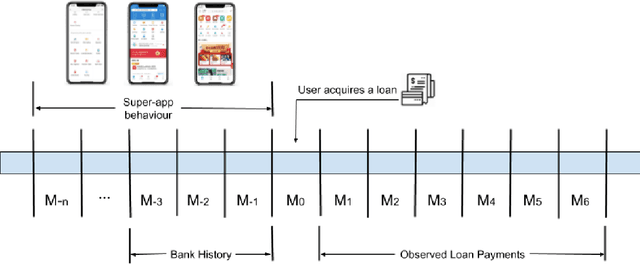Gabriel Suarez
Enhancing User' s Income Estimation with Super-App Alternative Data
Apr 12, 2021
Abstract:This paper presents the advantages of alternative data from Super-Apps to enhance user' s income estimation models. It compares the performance of these alternative data sources with the performance of industry-accepted bureau income estimators that takes into account only financial system information; successfully showing that the alternative data manage to capture information that bureau income estimators do not. By implementing the TreeSHAP method for Stochastic Gradient Boosting Interpretation, this paper highlights which of the customer' s behavioral and transactional patterns within a Super-App have a stronger predictive power when estimating user' s income. Ultimately, this paper shows the incentive for financial institutions to seek to incorporate alternative data into constructing their risk profiles.
Super-App Behavioral Patterns in Credit Risk Models: Financial, Statistical and Regulatory Implications
May 09, 2020



Abstract:In this paper we present the impact of alternative data that originates from an app-based marketplace, in contrast to traditional bureau data, upon credit scoring models. These alternative data sources have shown themselves to be immensely powerful in predicting borrower behavior in segments traditionally underserved by banks and financial institutions. Our results, validated across two countries, show that these new sources of data are particularly useful for predicting financial behavior in low-wealth and young individuals, who are also the most likely to engage with alternative lenders. Furthermore, using the TreeSHAP method for Stochastic Gradient Boosting interpretation, our results also revealed interesting non-linear trends in the variables originating from the app, which would not normally be available to traditional banks. Our results represent an opportunity for technology companies to disrupt traditional banking by correctly identifying alternative data sources and handling this new information properly. At the same time alternative data must be carefully validated to overcome regulatory hurdles across diverse jurisdictions.
 Add to Chrome
Add to Chrome Add to Firefox
Add to Firefox Add to Edge
Add to Edge